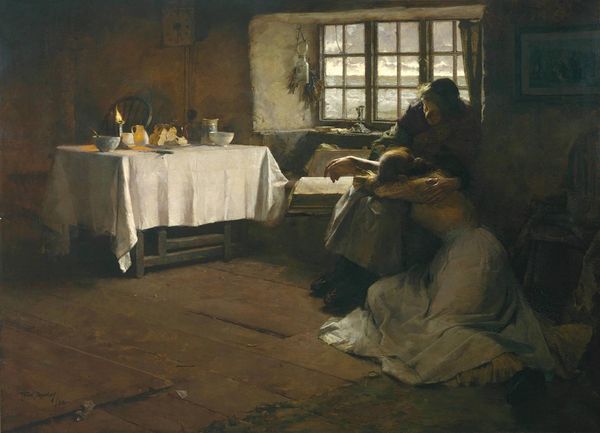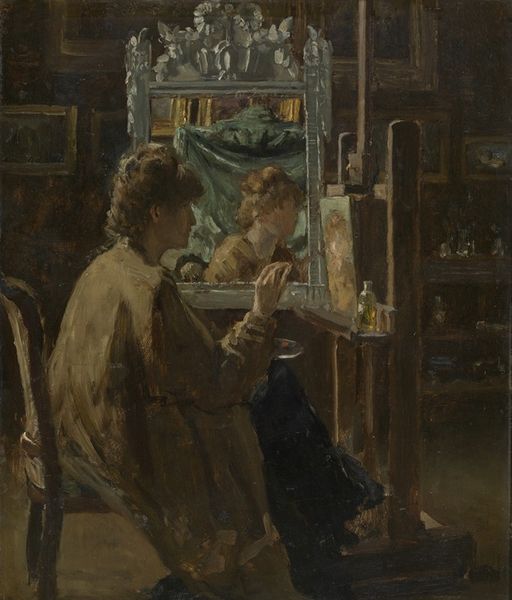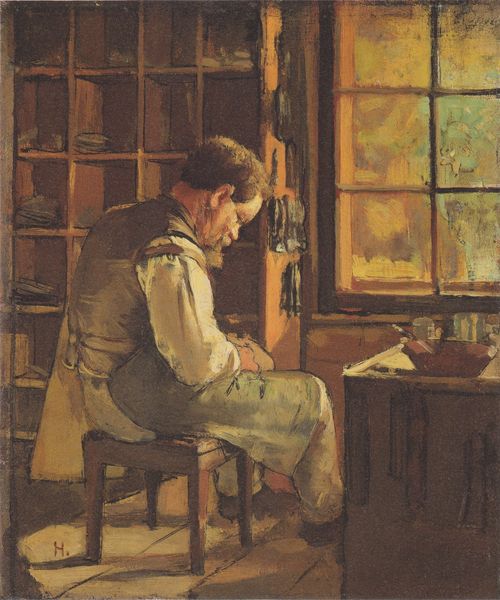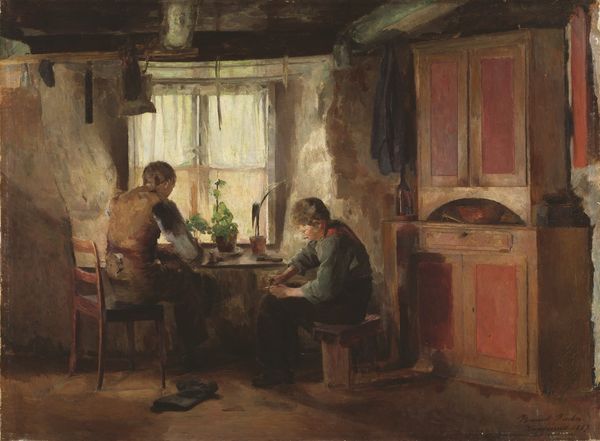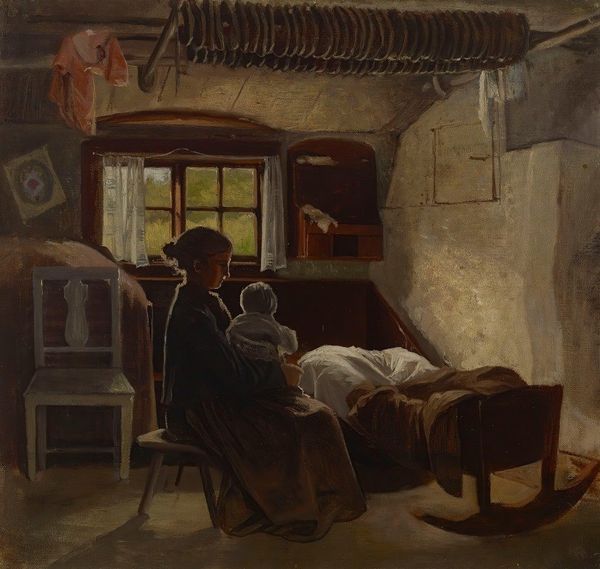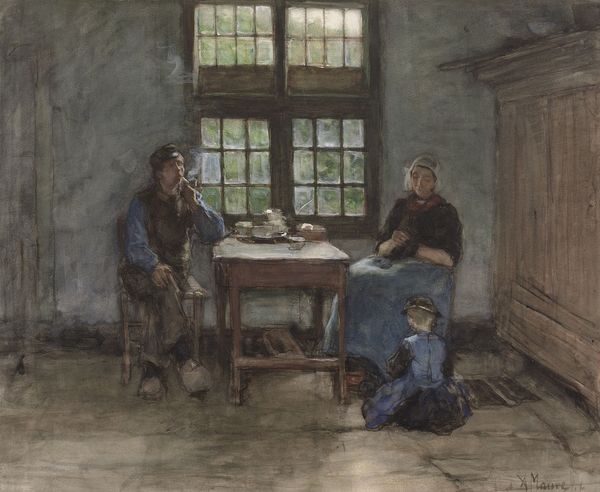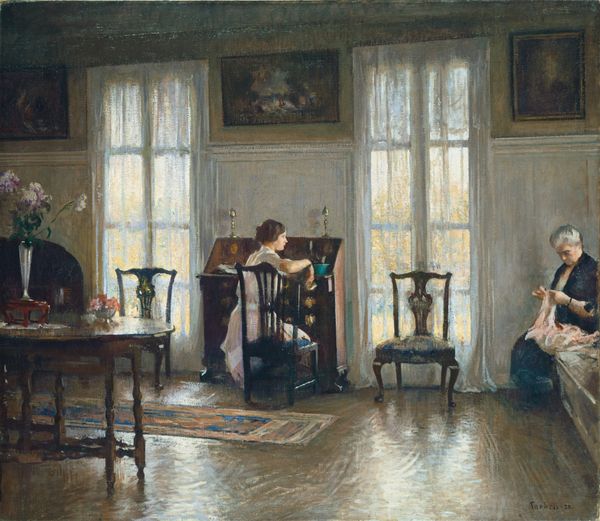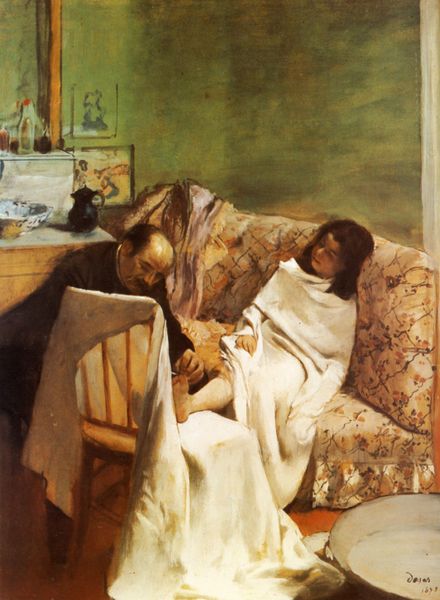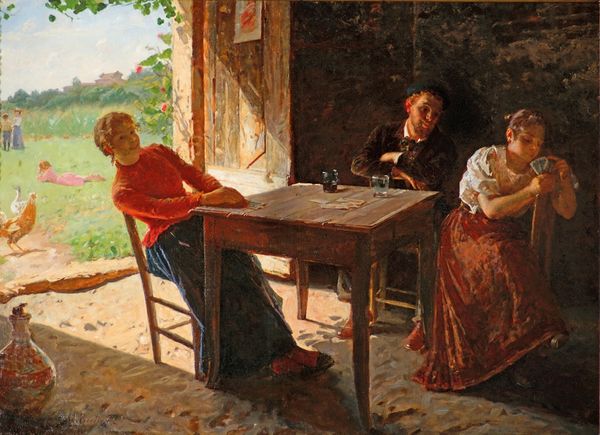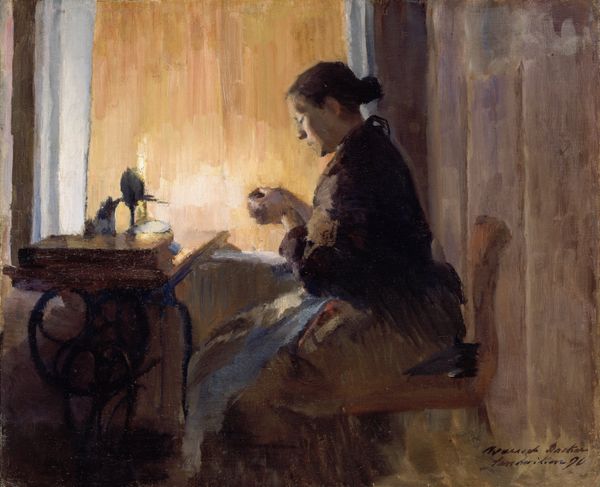
painting
#
painting
#
sculpture
#
oil painting
#
genre-painting
#
watercolor
#
realism
Dimensions: 63 cm (height) x 78 cm (width) (Netto)
Editor: This is Wenzel Tornøe's "At the China Repairer's," painted in 1891. It's incredibly tender. The way the light falls on the sleeping child creates such a peaceful mood, but there's also a sense of weariness coming from the father at work. How do you interpret this scene? Curator: This painting offers a glimpse into the lived realities of working-class families in late 19th-century Denmark. While seemingly a quiet domestic scene, it subtly confronts the socioeconomic constraints placed upon individuals. What do you notice about the father's workspace, its proximity to the child? Editor: It looks cramped and domestic – his workbench is right next to the baby’s cradle. Almost as if he can't escape work, even in his own home. Curator: Exactly. Tornøe uses this cramped composition to speak to the precarity of labor at the time. We might ask ourselves, what opportunities were available to this man? What choices did he have in providing for his family? Notice also the china he is repairing. Is it pristine porcelain from the upper classes, now in need of his skilled labor to return to its original state? It speaks to class dynamics, doesn’t it? Editor: It really does! And the baby's presence also brings in issues of gender, doesn't it? Perhaps unspoken expectations of who cares for the child while he works? Curator: Precisely. Tornøe’s realism unveils societal structures. It prompts us to consider whose stories are told and whose are often omitted within the dominant narratives of art history. Can you think of any contemporary artists who are using similar methods of critical analysis? Editor: Thinking about it now, maybe Kerry James Marshall's domestic scenes, but from a very different cultural background. Curator: An insightful connection. Tornøe invites a dialogue on social responsibility, asking us to consider the conditions of labor and life that underpin even the seemingly simple act of repairing china. Editor: I hadn't considered how much this painting had to say about socio-economic issues. Thanks, that’s changed my understanding completely.
Comments
No comments
Be the first to comment and join the conversation on the ultimate creative platform.
